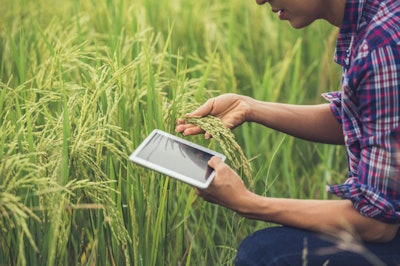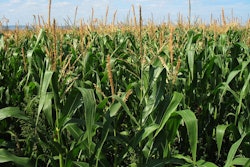
As the world grows more technologically dependent and driven, access to reliable, high-speed internet, and computers, tablets and other similar tools, is increasingly a necessity.
According to USDA’s Farm Computer Usage and Ownership report, 75% of farms have access to the internet and 73% have access to a desktop or laptop computer.
Farmers and ranchers are increasingly reliant on smart phones or tablets to conduct farm business, with 52% of farms surveyed reporting they do so, an increase of 8 percentage points since 2017.
This Market Intel dives into data outlined in the report, which provides an important glimpse into trends in technology availability and adoption for farm business use.
USDA estimates are based on the responses of over 20,000 agricultural operations representing all sizes and types of farms. The report is generated from the June Agricultural Survey, which is conducted each year; however, since 1997, questions regarding computer usage and ownership have been included in the survey during odd-numbered polling years.
Access
The Farm Computer Usage and Ownership data from USDA first became available in 1997. At that time, 13% of U.S. farms had internet access (with a range of 4% in Louisiana and Mississippi to 31% in New Jersey). In 2019, the survey indicated 75% of farms have internet access, with New Mexico having the most limited access, 42%. The report revealed 86% of Georgia farms have access to the internet, representing the largest increase – 26% – from 2017 levels. Figure 1 outlines the state-by-state percent of farms with access to a desktop or laptop computer.

The 2019 report revealed that 26% of farms use satellite as their primary method of internet access. In addition, while satellite and DSL continue to be the most popular methods used to access the internet, use of fiber optic internet increased 33% from the 2017 report and is now 12% of farms’ primary source for internet. Figure 2 illustrates the primary method of U.S. farms’ access to the internet from 2017 to 2019.

Usage
As agriculture is an increasingly technology-driven field, farmers and ranchers’ access to computers to conduct business is exceedingly important. The report shows that nearly half, or 49%, of farms in the U.S. use a desktop or laptop computer to conduct farm business. Computer usage for farm business ranges from 30% in New Mexico to 72% in Colorado. On-farm smart phone/tablet use to conduct farm business has increased 8 percentage points from 2017 to 2019 and now represents 52% of farms surveyed.
Since 1997, computer usage for farm business has increased nearly 150%, going from only 20% of U.S. farms 22 years ago to 49% in 2019. Figure 3 illustrates the percent of farms using computers for farm business from 1997 to 2019.

According to USDA’s report, 24% of farms are utilizing computers and internet access to purchase agricultural inputs such as seed, feed, fertilizer, chemicals and more, while 19% of farmers use these tools to conduct agricultural marketing activities. USDA estimates market coordination efforts, particularly in regard to direct-to-consumer sales, could spur a $6.4 billion gross annual benefit to the specialty crop industry, with $3.2 billion attributable to use of the internet alone.
Summary
Closing the digital divide is necessary for America’s farmers and ranchers to continue running their businesses and providing for their families. In order to do this, rural areas must have access to the necessary tools that has become instrumental in enabling people to live their lives. While there has been a strong uptick in farmers’ use of computers for business since 1997, over half of U.S. farms are still not able to access all the digital tools in their technological tool box.
Contact:
Megan Nelson, Economic Analyst
Phone: (202) 406-3629
Email: [email protected]









